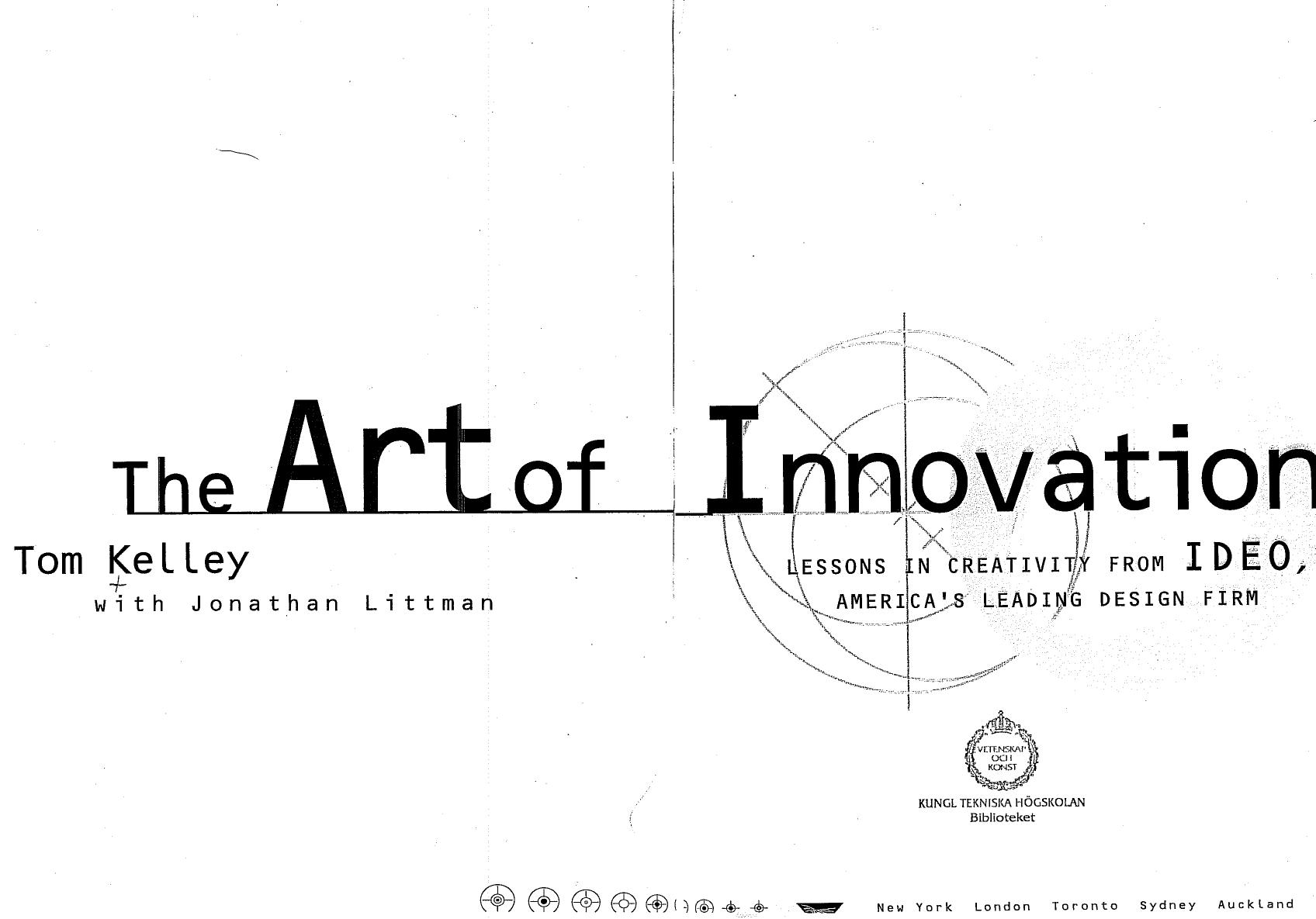The Art of Innovation by Tom Kelley

Author:Tom Kelley
Language: eng
Format: epub, pdf
Tags: Nonfiction
ISBN: 9780307423863
Publisher: Crown Publishing Group
Published: 2007-12-17T16:00:00+00:00
8
EXPECT THE UNEXPECTED
History teaches that innovation does not come about by central planning. If it did, Silicon Valley would be nearer to Moscow than to San Francisco. Working on thousands of projects has taught us a simple but critical element that every team or company should come to expect: the unexpected.
Chance offers insights you didn’t anticipate. It’s a well-accepted truth that inventions and discoveries often result from random accidents or experiments that went awry.
How can you capitalize on that phenomenon? Well, you can start by expecting the unexpected, being open to surprises from sources within and outside your organization.
Try approaching projects with humility and the knowledge that answers may come from places you least suspect. We call this "looking cross-eyed" and "cross-pollination." It’s quite liberating and powerful. If you expect to find answers from unusual places, it’s far more likely to happen. In nature, we know that cross-pollination leads to superior strains of plants. It’s the same with products and services. Launch a project with the assumption that cross-pollination may help you to innovate, and you’re more likely to be ready to take the leaps of creativity necessary for innovation.
Now that we’re midstream in the innovation process, I think its appropriate to issue a disclaimer. We don’t know it all. Neither does your boss or even the CEO. Accidents happen. Here follow some of my experiences and insights about how it is that serendipity plays a critical role in innovation—and what you can do about this puzzling variable.
BALANCING UNPREDICTABILITY
Growing up near Akron, I had "Ohio history" classes that included the story of Procter & Gamble’s fabulously successful Ivory soap. It began with a blunder: an ordinary worker who went to lunch and accidentally left a mixing machine running with a batch of soap inside. When he came back, the mix had been whipped to a froth, with soap so light that it floated. By chance, the new floating Ivory proved to be both convenient and popular, marketed by P&G as "99 and 44 one-hundredths percent pure." A factory worker stumbled onto a new way of mixing soap, but it was P&G’s marketing group that seized the opportunity to create one of the most successful packaged goods of the twentieth century.
Chance has played a role in all kinds of breakthroughs, from science to technology and business. Velcro started when a Swiss mountaineer returned from a hike covered with prickly cockleburs. A little observation under the microscope yielded the reason—nature’s tiny hooks, perfect for grabbing a ride in the feathers or fur of passing creatures. Voilà! Soon the French were making Velcro’s artificial hooks and loops that stick and easily separate. People had been plagued with prickly burrs from the beginning of recorded history. It took an intellectually curious person with access to the right tools to turn the idea into a breakthrough material. Stop and think for a moment. Are you proactively hiring the intellectually curious? If so, what tools do they need to help them along?
Saccharin was discovered in 1879
Download
This site does not store any files on its server. We only index and link to content provided by other sites. Please contact the content providers to delete copyright contents if any and email us, we'll remove relevant links or contents immediately.
| Biographies | Company Profiles |
| Economic History |
Pale Blue Dot by Carl Sagan(4001)
The Rules Do Not Apply by Ariel Levy(3906)
Goodbye Paradise(2964)
Delivering Happiness by Tony Hsieh(2922)
Liar's Poker by Michael Lewis(2812)
Into Thin Air by Jon Krakauer(2701)
Purple Cow by Seth Godin(2698)
Ogilvy on Advertising by David Ogilvy(2682)
Rogue Trader by Leeson Nick(2473)
The Airbnb Story by Leigh Gallagher(2371)
The Social Psychology of Inequality by Unknown(2311)
The Mind Map Book by Tony Buzan(2082)
Six Billion Shoppers by Porter Erisman(2000)
Bossypants by Tina Fey(1987)
All the President's Men by Carl Bernstein & Bob Woodward(1962)
Claridge's: The Cookbook by Nail Martyn & Erickson Meredith(1962)
Master of the Game by Sidney Sheldon(1881)
Alibaba by Duncan Clark(1755)
Wild Ride by Adam Lashinsky(1658)
